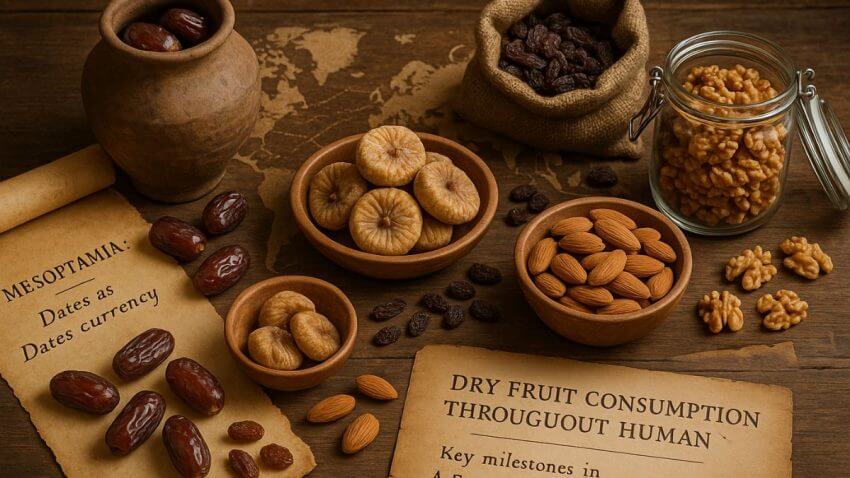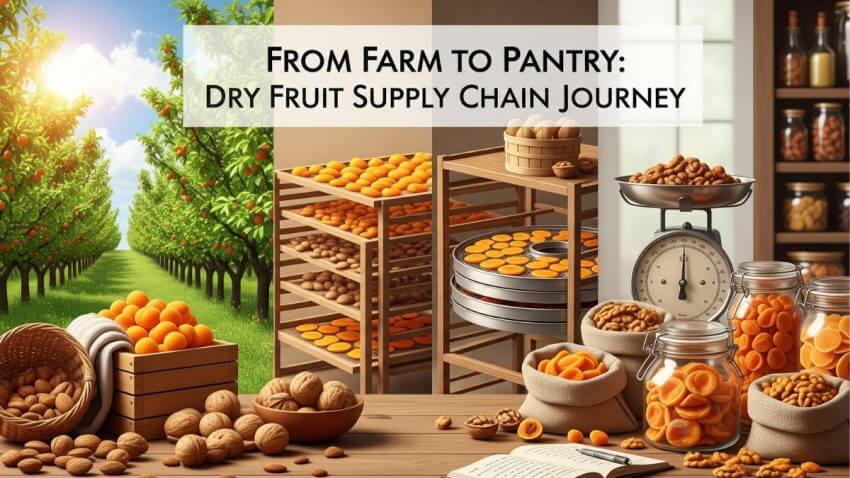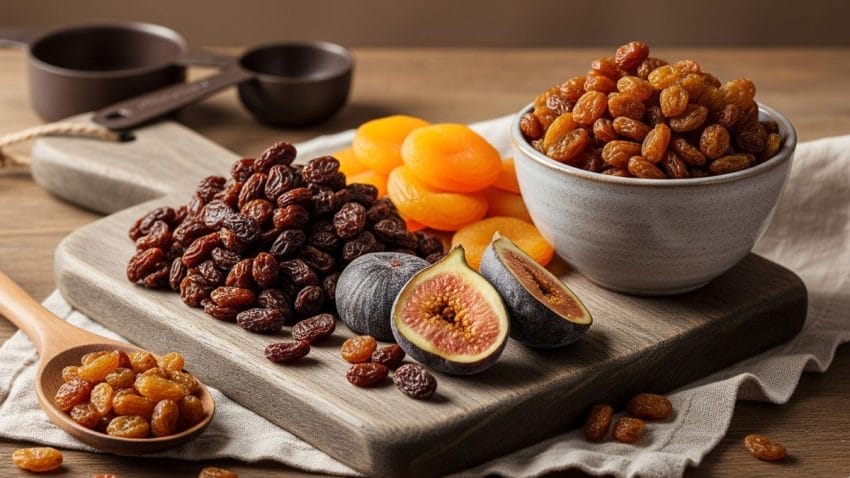Explore dry fruits sustainability: how almonds use water, energy in processing, food waste reduction benefits. Evidence-based analysis of environmental trade-offs and consumer choices.
Discover Dry Fruits
Fruit Pre-treatment Before Drying – Methods, Benefits & Step-by-Step Guide
Learn how to pre-treat fruit before drying to preserve color, flavor, and nutrients. Discover water-based, heat-based, chemical, and natural methods, plus tips for different fruits and drying techniques.
How Dry Fruit Consumption Changed Throughout Human History
The way we eat dry fruits today—as a quick energy snack, a gourmet salad topping, or a health-conscious ingredient—is the culmination of a journey thousands of years in the making. The story of their consumption is a mirror reflecting our own evolution. The evolution of dry fruit consumption habits traces a fascinating path from a…
Natural vs. Artificial Fruit Dehydration Methods: A Comparative Guide
The journey of transforming fresh, juicy fruit into shelf-stable dried delicacies follows two distinct paths: one guided by ancient tradition and solar energy, the other by modern technology and precision control. This fundamental difference between natural and artificial fruit drying shapes everything from nutrient retention to food safety outcomes. Natural drying relies on environmental conditions…
Dry Fruit Supply Chain: From Cultivation to Your Pantry
The handful of almonds in your snack bowl or the raisins in your morning cereal represent the final step of a long and complex global journey. This journey, the dry fruit supply chain, is a remarkable system of agriculture, technology, and logistics that connects orchards in distant valleys to your kitchen pantry. The dry fruit…
The Science of Fruit Dehydration: Principles, Processes, and Property Changes
Fruit dehydration transforms perishable fruits into shelf-stable products and applies complex scientific principles beyond simple drying.The science of fruit dehydration involves the controlled removal of water from fruit tissues, based on principles of physics, chemistry, and microbiology, to create a product with significantly extended shelf life and altered characteristics. This article examines the scientific mechanisms…
The Essential Dry Fruit Terminology Glossary: An A-Z Guide
Navigating the world of dry fruits can sometimes feel like learning a new language. What does “unsulphured” really mean? Is there a difference between “raw” and “natural”? Why is a peanut not a nut? Understanding this terminology is the key to making smarter, healthier, and more confident choices at the grocery store. This glossary provides…
History of Dry Fruits: From Ancient Civilizations to Modern Health Foods
We will explore how the simple act of drying fruit fueled migrations, sustained armies, financed trade empires, and enriched cuisines across millennia.
Are All Dried Versions of Fruits Considered “Dry Fruits”?
We will analyze the spectrum of dried fruit products, establishing clearer boundaries between what constitutes a ‘dry fruit’ in the traditional, whole-food sense versus a more highly processed ‘fruit-based snack’.
Dry Fruit Classification: A Guide to Nuts, Dried Fruits, and Seeds
The classification of dry fruits provides a clear framework for distinguishing between true dried fleshy fruits, culinary nuts (and their botanical distinctions), and edible seeds, aiming to resolve widespread consumer confusion.









